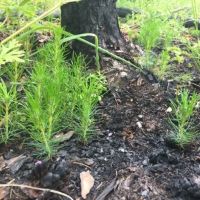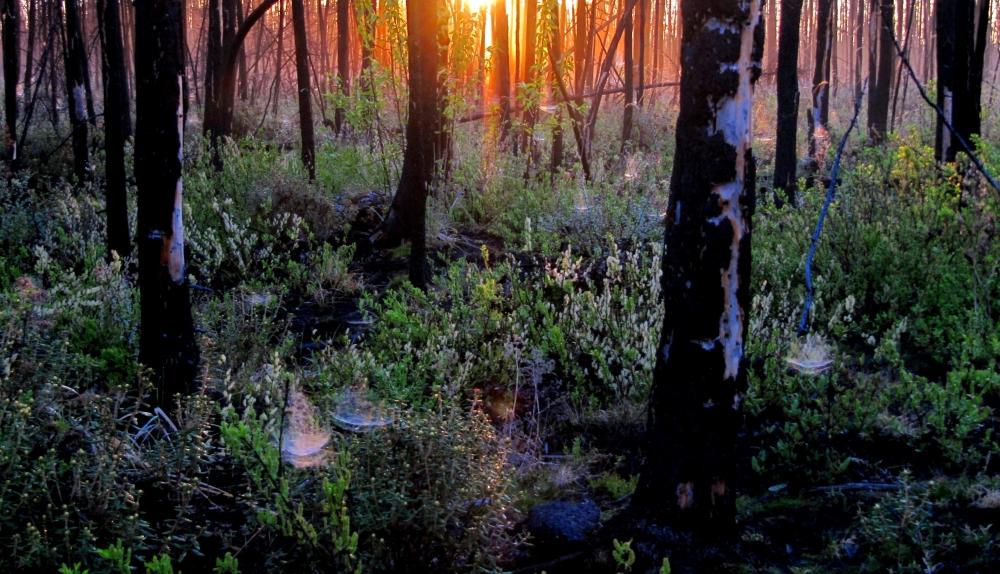Change in Average Stand Age
Summary of the changes in average stand age in Tolko's Southern Operating Area between 2010 and 2021 and following the 2023 fires.
Change in average stand age (2010–2023):
2010
2021
2023
- The aging of natural stands and a smaller portion of harvest areas nearly offset the reductions in stand age caused by fires between 2010 and 2021.
- The fires in 2023 brought the average age down significantly farther, to 70 years, with declines ranging from 4 to 9 years across stand types.

Introduction
The average age of forests is a useful indicator of the balance between disturbance rates and aging of forest stands.
- Average age in a natural environment is expected to stay roughly constant over time, as aging of undisturbed stands balances the loss of age when burned stands are reset to 0 years.
- Forest harvesting may serve as a substitute for fire in areas with effective fire suppression; however, harvesting primarily targets older stands, whereas fire can impact a broader range of age classes.
In this section, we report the average age of different stands types in Tolko’s Southern Operating Area in 2010, 2021, and after the 2023 fires.
Results
Change in Stand Age
The average age of all forested stands in Tolko's Southern Operating Area was:
2010
2021
2023
Highlights
- The average age of all stands in Tolko’s Southern Operating Area dropped slightly from 77 to 76 years from 2010 to 2021.
- Aging of natural stands and a smaller component of aging in harvest areas was almost completely offset by decreases in age due to fires during this timeframe. New forestry dropped the average age 1.0 years, while non-forestry human footprint dropped it a further 0.4 years, bringing the average forest age to 76 years.
- Due to the 2023 fires, which burned 8.8% of Tolko’s Southern Operating Area (see Section 2.4), the average age of the forest dropped substantially, to 70 years.
- While variation in average stand ages is natural, continued declines in average age of stands would eventually compromise the ability to maintain species that require older forest.
Average Age of Forest Stands
Average Age of Forest Stands. For the Southern Operating Area, the average ages of forest stands, by stand type, in 2010, 2021, and 2023. Also shown is how stand age was affected by land base changes between 2010 and 2021, including: native stand aging, forest harvest area aging, fires, new forestry footprint, and other human footprint.
Graph Interpretation
For different stand types from 2010 to 2021,
- deciduous and pine stands showed a small increase in average age as aging outweighed disturbance.
- treed lowlands did not change in average age.
- White Spruce and mixedwood declined in average age, due primarily to forestry.
- pine had a modest decline, from a mix of fire and forestry.
All stand types then lost 4–9 years of average age after the 2023 fires.





